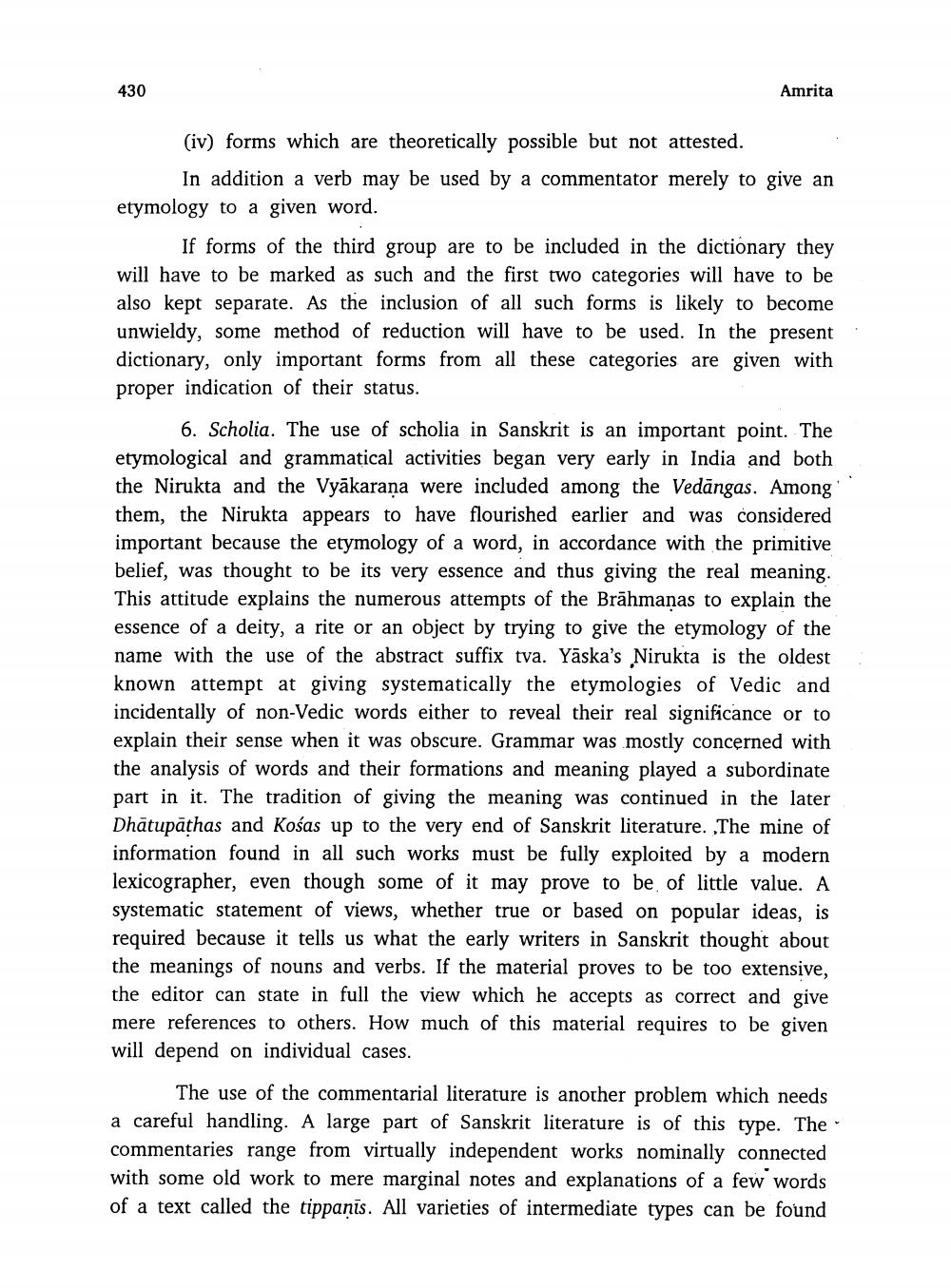________________
430
Amrita
(iv) forms which are theoretically possible but not attested.
In addition a verb may be used by a commentator merely to give an etymology to a given word.
If forms of the third group are to be included in the dictionary they will have to be marked as such and the first two categories will have to be also kept separate. As the inclusion of all such forms is likely to become unwieldy, some method of reduction will have to be used. In the present dictionary, only important forms from all these categories are given with proper indication of their status.
6. Scholia. The use of scholia in Sanskrit is an important point. The etymological and grammatical activities began very early in India and both the Nirukta and the Vyākarana were included among the Vedāngas. Among them, the Nirukta appears to have flourished earlier and was considered important because the etymology of a word, in accordance with the primitive belief, was thought to be its very essence and thus giving the real meaning. This attitude explains the numerous attempts of the Brāhmaṇas to explain the essence of a deity, a rite or an object by trying to give the etymology of the name with the use of the abstract suffix tva. Yāska's Nirukta is the oldest known attempt at giving systematically the etymologies of Vedic and incidentally of non-Vedic words either to reveal their real significance or to explain their sense when it was obscure. Grammar was mostly concerned with the analysis of words and their formations and meaning played a subordinate part in it. The tradition of giving the meaning was continued in the later Dhātupāthas and Kośas up to the very end of Sanskrit literature. The mine of information found in all such works must be fully exploited by a modern lexicographer, even though some of it may prove to be of little value. A systematic statement of views, whether true or based on popular ideas, is required because it tells us what the early writers in Sanskrit thought about the meanings of nouns and verbs. If the material proves to be too extensive, the editor can state in full the view which he accepts as correct and give mere references to others. How much of this material requires to be given will depend on individual cases.
The use of the commentarial literature is another problem which needs a careful handling. A large part of Sanskrit literature is of this type. The commentaries range from virtually independent works nominally connected with some old work to mere marginal notes and explanations of a few words of a text called the tippanis. All varieties of intermediate types can be found




